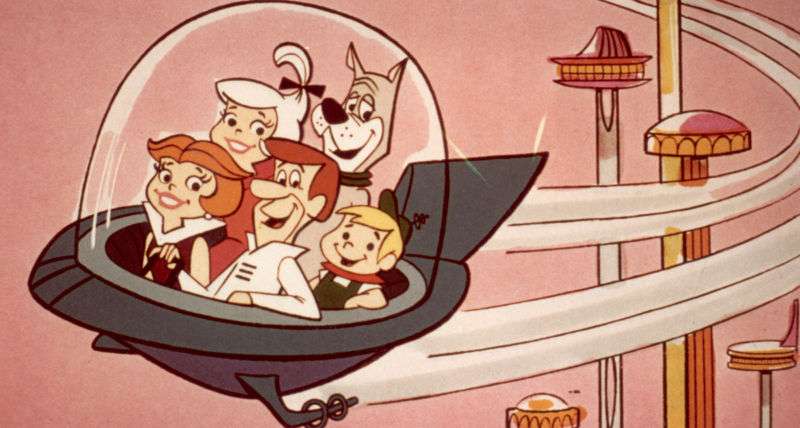
Where we’re going, we won’t need windows: How autonomy will change cars

As artificial intelligence technology becomes more integrated into our daily lives, it may have a profound effect on how everyday objects look and behave. That’s especially true of autonomous vehicles. While the first self-driving cars in development have built upon human-controlled designs, AI will steer vehicle design past traditional shapes and features. With fewer human factors to worry about, the shape and behavior of vehicles could change radically. And it could all start with something as simple as headlights.
“As vehicles shift from drivers to autonomy, the importance of lights will diminish while the importance of sensors will increase,” explained Adam Rodnitzky, the vice president of marketing at Occipital, a spatial computing company. “Therefore, we’ll start to see common design features like headlights, tail lights and turn signals go from prominent styling features to vestigial and diminished design elements.”
Headlights won’t go away any time soon. But they may soon house sensors as well as lights. “Right now, it’s conventional-looking cars with a rack of sensors attached to the top that include a variety of different LiDAR sensors and as many as nine cameras looking forward, sideways, and backwards,” said Alan Amici, vice president and CTO for transportation solutions at TE Connectivity—a company that develops networking and sensor devices for harsh environments. “As we get better at developing autonomous vehicles, you’ll see that top rack of sensors replaced by much more seamless integration.” Embedding radar and other sensors in the headlamps will make the vehicles more aesthetically pleasing, he added.
Eventually, the headlights won’t necessarily be lights. While lights may be essential for safety while driving among human-controlled vehicles, actual lights may eventually be unnecessary because there won’t be a windshield to look through—or any windows, for that matter.
VR in the car
Car manufacturers and industry analysts agree that vehicles will become entertainment centers. That concept starts with replacing windows with screens. Not only can the car’s many cameras show you what is outside, but the view can be enhanced by augmented reality. The car can also deliver an immersive virtual reality. Intel and Warner Brothers are already collaborating to make in-car VR experiences the next evolution in movies.
“Passengers of tomorrow can expect to be transported not only to their destination via the autonomous vehicle, but through virtual and augmented reality along the way,” said Kathy Winter, vice president and general manager of the automated driving group at Intel.
In any case, you’ll be in a metal tube zooming down the highway. A natural view outside via windows would likely leave you with a bad case of motion-sickness at those speeds. You wouldn’t see much anyway, so you might as well opt for the screens.
The car doesn’t go to the store. The store comes inside your car.
“There will be significant innovation when it comes to companies vying for users’ attention in the car. If vehicles will have some degree of autonomous driving implemented in the future, then for sure, we can expect advertisements, streaming audio and video, and other media to be included in the vehicle,” said Ravi Mohan, co-chair of the automotive practice group at the law firm Rutan & Tucker.
Certainly, the onboard AI concierge will suggest stops along your route based on your preferences, as well as a few new places you might want to shop, too. But if you don’t care to make a stop, the shops can come to you inside your car.
“An AI-driven vehicle ceases to be just a vehicle—it can be anything. And as technology has transformed the concept of retail, it can transform a car ride into a shop on wheels,” said Kiki Del Valle, senior vice president of commerce for every device at MasterCard. “The store is no longer beholden to its four walls. It’s in your home office, where your desktop is; it’s in your pocket, where your smartphone is; and now, it’ll be on the road.”
For that to happen, De Valle added, merchants will have to “deliver an immersive, relevant experience that is safe and more convenient than what’s currently available,” in ways that “enhance consumer experiences.” That means adoption of machine learning and AI technologies that adapt to consumers.
Of course, if Uber and Waymo have their way, many fewer people will actually own cars, particularly in more urban settings. AI could help capacity planning for ride-sharing services to ensure that vehicles are near where they’re needed. This could change the dynamics of parking; if vehicles are in constant motion other than for recharging or refueling and maintenance, less storage space is necessary.
One thing that won’t likely change soon is the infrastructure vehicles rely on to get around—asphalt-paved streets. Smart city technologies, such as advanced traffic management systems that interface with autonomous vehicles, will likely be layered upon existing streets, Amici said. So where we’re going, we’ll still need roads—and we’ll probably still have to fix flat tires.




